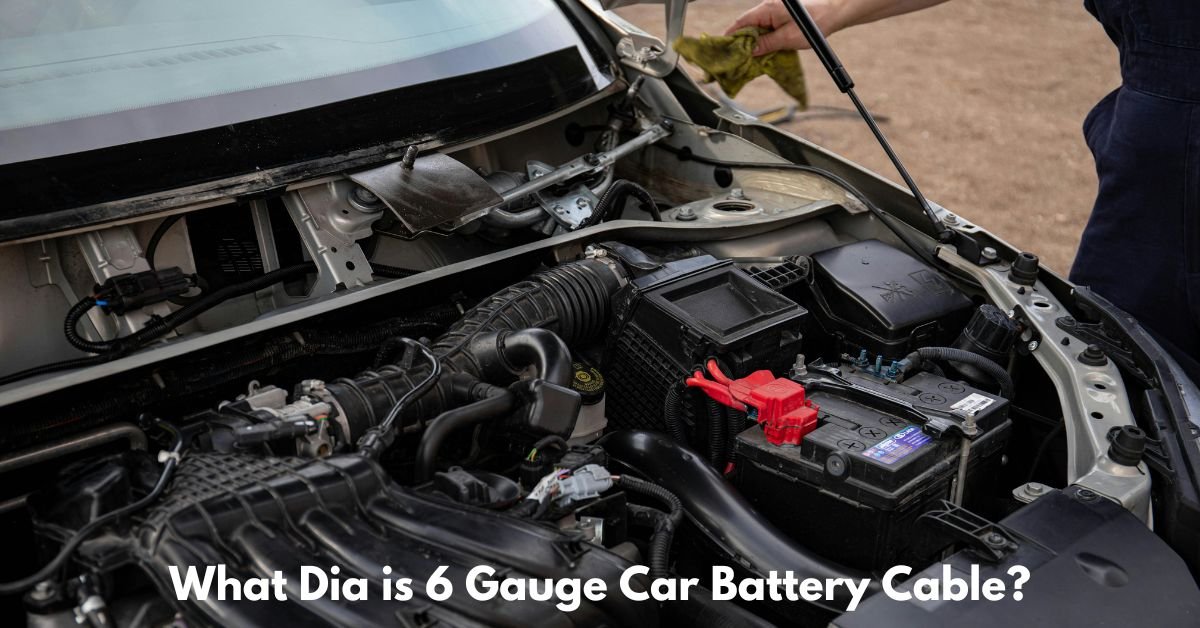When working with car batteries, especially in automotive repair or modification, one of the most important components to consider is the car battery cable. The size, material, and rating of the cable play a significant role in ensuring optimal performance, safety, and durability. One of the most common sizes you might encounter is the 6 gauge (6 AWG) car battery cable, but what does “DIA” (diameter) refer to in this context? Let’s dive deeper into the subject to understand the implications of the diameter of a 6 gauge car battery cable and why it matters.
What is DIA for 6 Gauge Car Battery Cable?
1. Understanding Car Battery Cable Gauges
Before we focus on the diameter, it’s important to understand what a gauge means in the context of cables. In the United States, cables are measured using the American Wire Gauge (AWG) system, which is a standardized way to measure the thickness of electrical wires.
- Gauge Number: The smaller the number, the thicker the wire. For example, a 6 AWG wire is thicker than an 8 AWG wire.
- Electrical Conductivity: The thicker the wire (i.e., lower gauge), the better it can conduct electricity with less resistance. This is crucial for applications like car batteries, where high power is needed to start the engine.
2. The Significance of 6 Gauge (6 AWG) Car Battery Cable
A 6 gauge car battery cable is a mid-range cable used in various automotive applications. It is thick enough to carry the current required for many standard automotive electrical systems without excessive resistance. This makes it ideal for applications like:
- Connecting the battery to the alternator.
- Wiring the starter motor.
- Connecting the positive and negative terminals of the battery to the electrical system.
It’s important to choose the correct gauge for your car battery cable, as using a cable that is too thin can result in voltage drops, overheating, and potential damage to the electrical system.
3. What is DIA for 6 Gauge Car Battery Cable?
The term “DIA” refers to the diameter of the wire, which is a critical specification for understanding the physical size of the wire. For 6 AWG cable, the diameter is typically measured in millimeters or inches and is crucial when selecting the correct cable for installation or replacement.
- Typical Diameter: A 6 AWG car battery cable has an approximate diameter of 0.162 inches (4.115 mm). This is the outer diameter of the wire, and it includes the insulation (if applicable).
However, the diameter of the wire can vary slightly depending on the insulation material used. For example, cables with thicker insulation might have a slightly larger overall diameter than those with thinner insulation.
Must Read: What Dia is 4 Gauge Car Battery Cable?

4. Why Does the Diameter Matter?
The diameter of the 6 gauge battery cable matters for several reasons:
- Current Capacity: The diameter directly correlates with the cable’s ability to carry electrical current. A thicker cable (larger diameter) allows for more current to pass through without overheating or suffering from excessive voltage drop.
- Installation Compatibility: The diameter of the cable impacts how easily it can fit into connectors, terminals, or conduits. If the cable diameter is too large, it might not fit, while a cable that is too small could result in a poor connection.
- Durability and Safety: A larger diameter usually means a thicker wire with more robust insulation. This can provide greater protection against heat, friction, and abrasion, reducing the risk of short circuits or damage to the cable.
- Flexibility: Although thicker cables are more durable, they can be less flexible. The diameter, in this case, affects how easy it is to route and handle the cable when installing or maintaining the car’s electrical system.
5. What to Consider When Choosing a 6 Gauge Car Battery Cable
Choosing the right 6 gauge battery cable is more than just about the diameter. There are a number of things you should consider:
- Material of the Cable: Copper is the best material for conducting electricity, and it’s commonly used in car battery cables. However, aluminum cables are sometimes used as a cheaper alternative, but they are bulkier and less efficient for the same gauge.
- Insulation Type: The insulation protects the cable from damage and helps prevent short circuits. The most common types of insulation are PVC, rubber, and cross-linked polyethylene (XLP). Each type offers different levels of resistance to heat, abrasion, and chemicals.
- Length of the Cable: The longer the cable, the higher the resistance. It’s essential to select the right length for your vehicle’s application, as this will also affect the current-carrying capacity of the cable.
- Temperature Rating: Consider the operating temperature of the cable. For example, cables exposed to high heat under the hood of a car should have a higher temperature rating.
Conclusion
In summary, when we talk about the DIA (diameter) of a 6 gauge car battery cable, we are referring to the outer physical dimension of the cable, which typically measures around 0.162 inches or 4.115 mm. The size of the diameter is important because it influences the cable’s current-carrying capacity, its flexibility, and its compatibility with the electrical components in the car. Understanding this is crucial when selecting the proper cable for a safe, reliable, and efficient automotive electrical system.
When replacing or installing a car battery cable, it’s always advisable to ensure the diameter, material, and insulation are all suited to your vehicle’s specifications. Selecting the correct 6 gauge cable is vital for maintaining the proper performance of your car’s electrical system and ensuring that the battery remains fully charged and ready for action.
